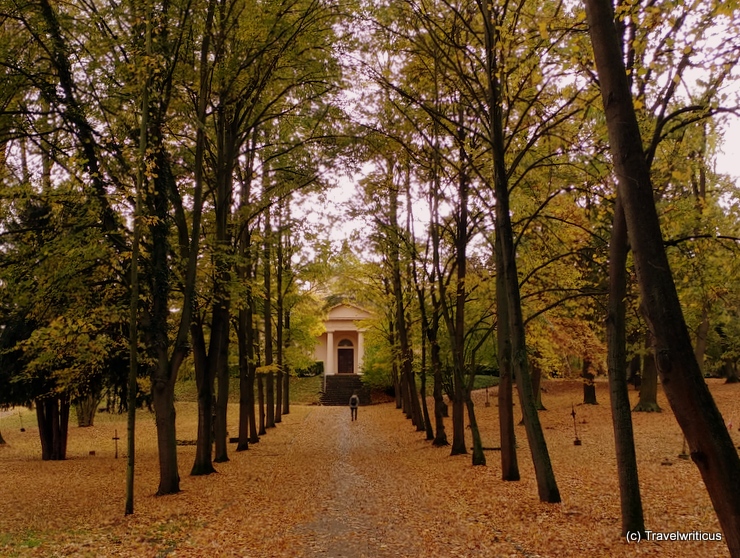
The Historic Cemetery (Historische Friedhof) is part of the World Heritage Site titled Classical Weimar. Johann Wolfgang von Goethe rests here in the Ducal Vault (Fürstengruft). [German]
Historic Cemetery in Weimar
Even though the cemetery is considered one of the most visited in Germany, I walked alone. The cold fall weather and a temporary drizzle might be an explanation for my walk in seclusion.
The northern part of the cemetery reminded me of a park. A few grave crosses protruded from the soil, covered with leaves. Only along the large cemetery wall, a grand number of vaults gave me a lot to read about wealthy families in Weimar.
South of the Ducal Vault, the cemetery turned into a more lively one – if you excuse this pun – people from all walks of life found their resting place here. This part of the cemetery was still in use, whereas the northern part had been closed years ago.
The Ducal Vault
Yes, it looks like a masterpiece of Classical period architecture. On the other hand, it certainly stands in the shadow of a Russian Orthodox Chapel next to it. The explanation for this combination of different architecture: The chapel is the burial site of Grand Duchess Maria Pavlovna.
A connecting doorway between the two adjoined buildings reunites the Duchess with her husband, Carl Friedrich, who has been laid down in the Ducal Vault. But there is another pair of prominents the Ducal Vault is famous for.
The building was also called the Goethe and Schiller Mausoleum for many years. As an honour, both writers found their last place next to the rulers of the duchy. But today, this story isn’t without any doubt anymore.
Where is the burial place of Schiller?
For a long time, the Ducal Vault was considered the last resting place of Friedrich Schiller. Today, historians believe his body never left the Kassengewölbe on the grounds of the Jacobsfriedhof. The Jacobsfriedhof is considered the oldest cemetery in Weimar.